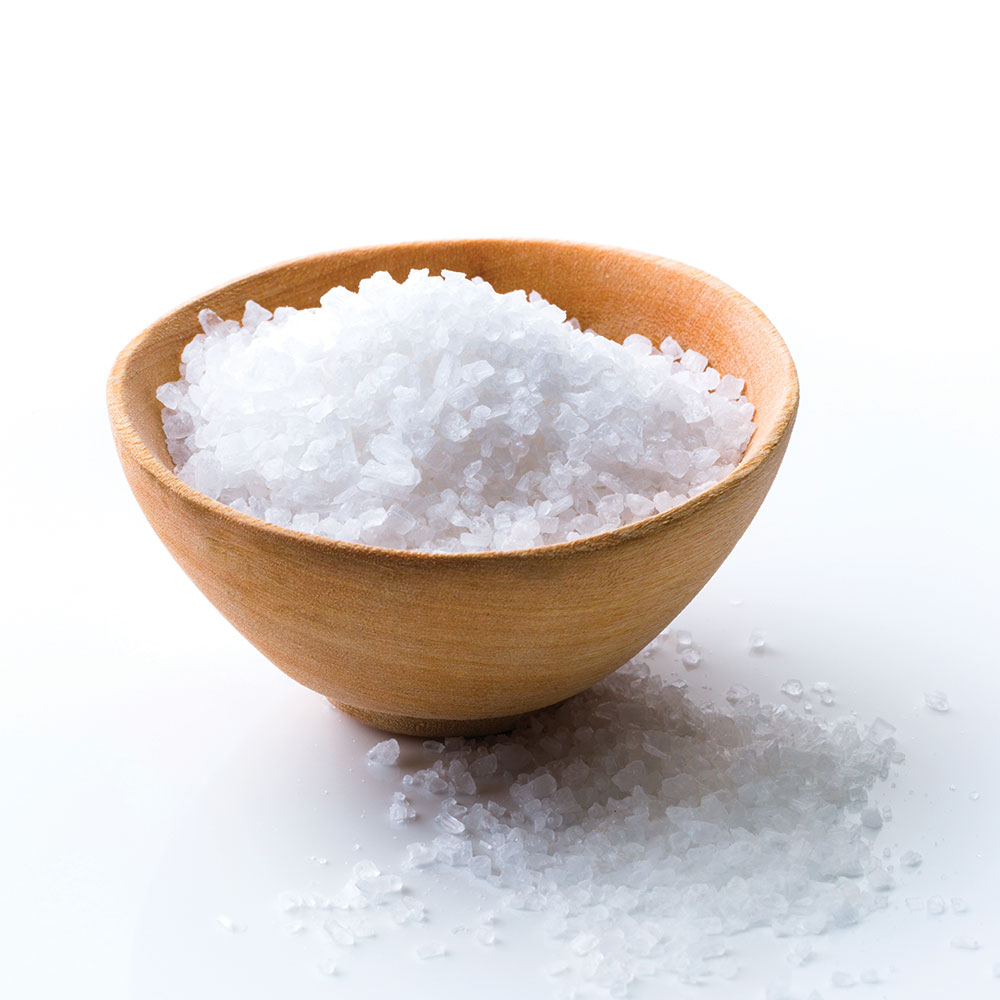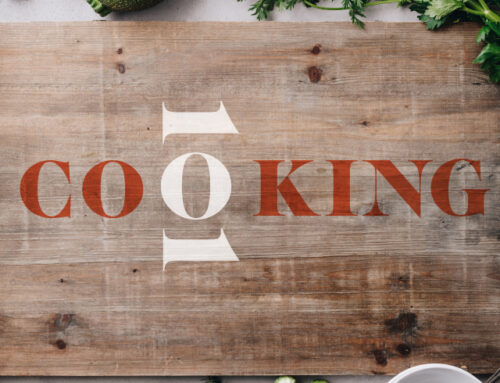Salts of the Earth
by Lenora Dannelke

The ubiquitous recipe instruction, “add salt to taste,” underscores the essential nature of this now commonplace ingredient – which boasts a dramatic history. Wars, in fact, have been fought over salt. “It’s serious stuff – and my favorite stuff,” says Christopher Heath, Paxos Group Corporate Chef of Melt and Blue. “It’s extremely important to be able to enhance the flavors and the product that you’re using.”
Heath is quick to start listing the salt varieties used at both restaurants and their specific uses. “At both restaurants I use a variety of salts, including kosher and fleur de sel salt for different reasons,” Heath says. Kosher salt is reserved for batch cooking and in any dish that needs salt to dissolve quickly, such as soups and sauces or salting water for pasta. “Fleur de sel is the cream of the crop. That’s a hand-harvested salt from Brittany in France. It’s the flower of salt – the floating crystal on top of the salt ponds. I use that for all my meats because it penetrates and dissolves slowly as it cooks, and gives an amazing taste.” Heath also uses this as a “finishing salt” sprinkled on top of foie gras or crudo to create a burst of salinity to complement the protein.
Salt also plays a prominent role in making desserts and candies, from chocolate truffles to caramels. “I’ve been cooking for twenty-two years and I’ve put salt in every dessert I’ve made,” Heath says. “It brings out flavors and corresponds with and balances the sweetness – and hits the palate in different ways.”
Other distinctive forms of sodium chloride, gathered from the corners of the globe, enable connoisseurs to select the perfect size, shape and intensity to garnish every dish. Striking colors – from vibrant red clay-tinged Hawaiian Alae crystals to dramatic black Cyprus sea flakes – also provide stunning visual appeal. Chefs such as Shawn Doyle at Savory Grille keep these and other exotic salts on hand to put a dramatic finish on dishes. Although prices of some of the more exotic varieties of salt, such as Japanese Jewel of the Ocean and Amethyst Bamboo, can soar well over $100 per pound, purchasing small jars make these an affordable luxury that can take your cooking to the next level.
The surface area of a crystal determines the degree of saltiness perceived on the tongue, which is why ultra-fine grains of Mexican Benequenes seem “saltier” than delicate pink flakes from Australia’s Murray River. The crunch factor of coarse grains and large flakes is another important component of flavor. To understand how texture impacts taste, compare this to how differently shaved or grated Parmesan reacts on the palate.
Not all salts are harvested from the ocean. Primordial seas that covered the planet a few hundred million years ago left salt deposits buried beneath the earth’s surface. Even the high Himalayas boast a special type of fossil marine salt, tinged pink from its high iron content. Slabs of this salt are now a hot cooking trend – literally. Just heat and place thin slices of steak on top to sear in flavor, or chill them and use them to enhance the flavor of cold foods – including ice cream.
Underground salt deposits can be retrieved by dry mining, similar to the way coal is mined – by sinking a shaft, then drilling, blasting and hauling – or by solution mining. In this method, fresh water is injected into deep veins to dissolve salt deposits. The saline solution is pumped to the surface, where evaporation takes place in vacuum trays. These high-volume methods result in the less expensive types of supermarket salt, and the refining process that strips minerals results in a one-dimensional flavor.
Flavored salts have become trendy and the Lehigh Valley is home to several leading makers of these distinctive tastes. Kimarie Santiago began making flavor infused sea salts as hostess gifts and her company Saltopia (saltopiasalts.com) now offers twenty-nine signature flavors of these salts at the Easton Farmers’ Market, ranging from Blushing Blossoms (lavender infused) to Dirty Wedding (white truffle infused). “People kept telling me, ‘You have to sell these. They’re unbelievable!’ So I started at a farmers market in New Jersey and sold out the first day. That was three years ago and I now have a certified kitchen facility and we make them in bulk, about 500 pounds at a time of each flavor,” Santiago says. “The molecular structure of each salt crystal is essentially like a person’s DNA and because of that it infuses flavors different ways. You need to make sure flavors will bond and come through properly with full-bodied flavor. And that takes different amounts of time.” For example, Up Close & Peachy (peach and cinnamon) requires three full months to infuse while Kiss & Tell (garlic) takes only a day.
Author and Lehigh Valley resident Dave Joachim has also taken his passion for salt to a professional level, co-founding the company Chef Salt (chefsalt.com). Six years ago he developed eight unique – and convenient to use – varieties of flavored-enhanced artisan salt and spice blends. “We call them artisan salts because they’re typically made from small family salt works from around the world,” Joachim says. “The idea of Chef Salt is to celebrate these salts and their great flavors by mixing them with herbs and spices so you can cook like a chef.” Pinching any one of the exotic flavors, such as Tunisian Fire, Bamboo Curry or Tuscan Herb, will provide salt flavor that’s already balanced with the right amount of spices for perfect taste and aromas. “Bacon BBQ is great on anything you’re going to grill – it’s a pepper blend of chiles, smoked paprika, smoked sun-dried tomato powder – and it’s also good on French fries. My kids love it on scrambled eggs.” Look for these savory sensations at LaBelle Cuisine in Emmaus.
For some individuals, the very idea of using salt sets off health alarm bells. However, Joachim notes that, “Salt is one of those minerals that’s essential to our survival. It performs basic functions, it regulates fluids, it’s an electrolyte with potassium and magnesium, it transmits nerve impulses – it does all sorts of things. So we need salt.”
As a necessity, why not add a pinch of excitement to your diet by thinking outside the Morton’s box?
As seen in the 2014 Issue
Click to Visit Our Advertisers




